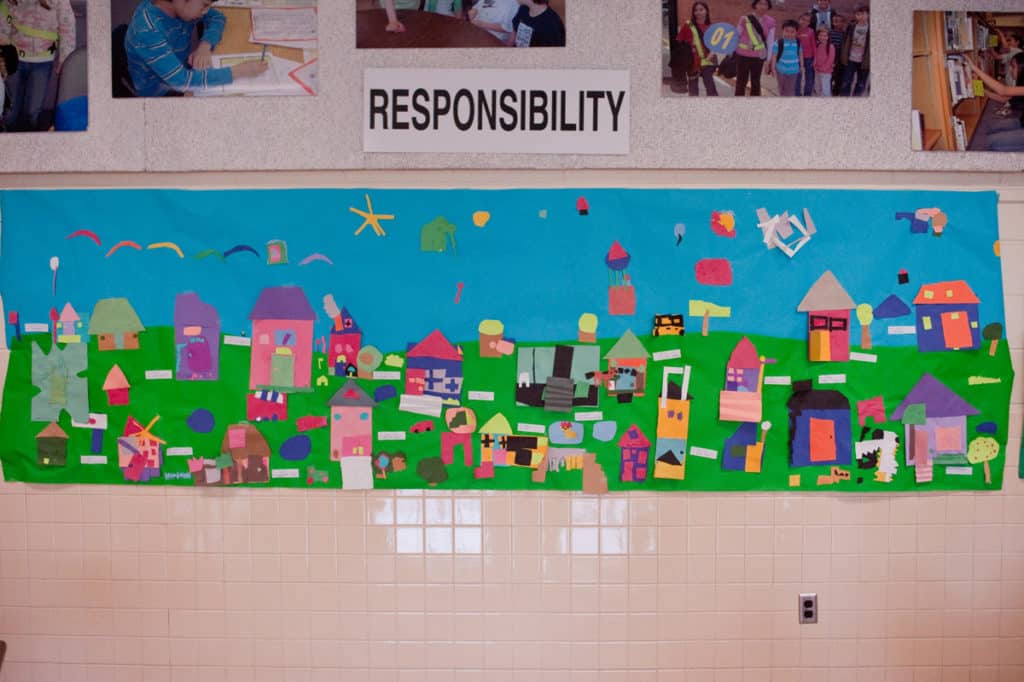
The Responsive Classroom approach is a general approach to educating children that gives teachers and administrators strategies for creating a safe school environment in which harmful behavior is less likely to thrive. The approach focuses on building community and teaching children important social skills, such as cooperation, assertion, responsibility, empathy, and self-control. It also gives teachers strategies for helping children find constructive ways to deal with their problems.
Bullying is an immensely complicated issue with many dimensions. But regardless of the specific steps a school needs to take to address its bullying problems, the Responsive Classroom approach provides a strong, positive environment in which such efforts can succeed. For Center for Responsive Schools, developer of the Responsive Classroom approach, bullying is an issue of ongoing concern, one that we continue to grapple with. Here are our responses to questions we frequently hear from teachers and administrators about this important topic.
Bullying is repeatedly making fun of, embarrassing, or scaring another person. Studies by groups such as the National Association of School Psychologists suggest that over five million children experience frequent bullying, and over six million consistently bully others. Stan Davis says those numbers make bullying the most common form of violence in American society.
We all know the connections between bullying and tragedies such as Columbine, in which the shooters were boys who experienced bullied for years. But research by Dan Olweus and others has shown that even aside from these violent tragedies, bullying damages all children. Those bullied are more likely to be truant, to be depressed, and to hurt themselves and others. Bullies are more likely to grow into adults who are dangerously aggressive. Bystanders, too, face negative consequences. They may feel frightened and confused; they know what they’re seeing is wrong but they’re afraid—or don’t know how—to intervene.
But researchers have also found that bullying (and the damage it causes) is not inevitable, not a rite of passage or a necessary part of childhood. We can teach children other ways to behave.
Whatever anti-bullying programs and strategies schools choose, we believe several elements are important:
Many Responsive Classroom practices, although not designed to deter bullying specifically, are consistent with those that anti-bullying experts have found to be effective. It’s very important, for example, that children gather together regularly as a class to get to know each other and appreciate both similarities and differences. Morning Meeting, a key Responsive Classroom component, provides just this kind of regular class gathering.
Setting clear expectations is important, too. The Responsive Classroom approach to discipline does that through having students share their hopes for learning and then guiding them to create rules that enable everyone to fulfill their hopes.
Teachers then introduce logical consequences that will apply when children don’t observe the rules the class has made together. Those logical consequences would come into play when, for example, one child criticizes another’s clumsiness on the playground. Such behavior violates any rules about respecting or taking care of each other, so a logical consequence is appropriate. Depending on the situation, the consequence might be a time-out, losing the privilege of participating in the activity, or losing the privilege of being at recess that day.
The Responsive Classroom approach also gives children plenty of opportunities to practice positive behaviors and language. Teachers use modeling and role playing to teach positive social behaviors, and they strengthen social learning by connecting it with academic studies. They actively teach problem solving, independence, assertion, and self-control. Teachers also encourage reflective discussion about what behaviors children think are working well and where they could improve.
The Responsive Classroom approach gives the adults at school strategies for structuring recess and being out there on the playground, involved with the children. Not only does this help prevent bullying, but if any bullying happens, adults can see it and stop it immediately.
As for the bus, the Responsive Classroom approach teaches students expectations for bus behavior and encourages adults to debrief with students about their bus rides. It also encourages bus drivers and school staff to talk together about what’s happening on buses. Then the whole school community problem solves together.
For a comprehensive look at how to address bullying, spend some time with How to Bullyproof Your Classroom K-5 (Second Edition). This edition features recent studies, updated references, and a new chapter on cyberbullying, along with time-tested and developmentally responsive strategies to create a classroom in which bullying and meanness diminish and kindness flourishes.
You can also find our latest free articles on responding to bullying here.